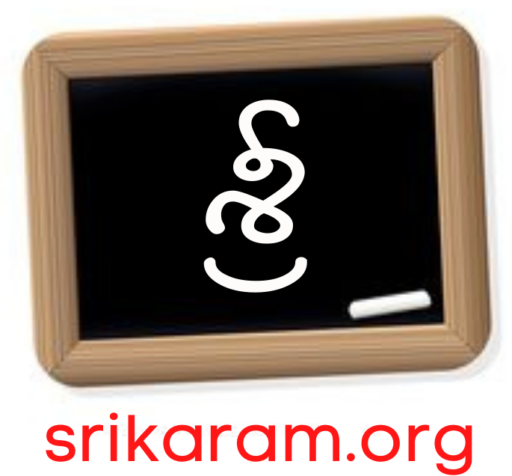Here are some greetings, common phrases, and some basic grammar to get you started.
1. Greetings
- Hello – హలో (Halo)
- Good morning – శుభోదయం (Shubhodayam)
- Good afternoon – శుభసమయము (Shubhasamayamu)
- Good evening – శుభసాయంకాలం (Shubhasayankalam)
- Good night – శుభరాత్రి (Shubharatri)
- How are you? – నీవు ఎలా ఉన్నావు? (Neenu ela unnava?)
- I am fine, thank you – నేను బాగున్నాను, ధన్యవాదాలు (Nenu bagunnanu, dhanyavadalu)
- What is your name? – నీ పేరు ఏమిటి? (Nee peru emiti?)
- My name is [Your Name] – నా పేరు [మీ పేరు] (Na peru [Your Name])
2. Common Phrases
- Yes – అవును (Avunu)
- No – కాదు (Kaadu)
- Please – దయచేసి (Dayachesi)
- Thank you – ధన్యవాదాలు (Dhanyavadalu)
- Sorry – క్షమించండి (Kshaminchandi)
- Excuse me – క్షమించండి (Kshaminchandi) or (ఉండండి) (Undandi) for getting attention
- How much is this? – ఇది ఎంత? (Idi enta?)
- Where is the restroom? – శౌచాలయం ఎక్కడ ఉంది? (Shouchalayam ekkada undi?)
- I don’t understand – నాకు అర్థం కావడంలేదు (Naaku ardham kaavadamledu)
3. Basic Grammar
Pronouns
- I – నేను (Nenu)
- You – నీవు (Neenu) or మీరు (Meere) for formal
- He/She – అతను / ఆమె (Atanu / Aame)
- We – మనము (Manamu)
- They – వారు (Vaaru)
Simple Sentence Structure
- Subject + Object + Verb
- Example: I eat an apple – నేను ఒక ఆపిల్ తింటాను (Nenu oka apple tintanu)
Verb Conjugation
- To be (ఉండడం – Undadam)
- I am – నేను ఉన్నాను (Nenu unnanu)
- You are – నీవు ఉన్నావు (Neenu unnava)
- He/She is – అతను/ఆమె ఉన్నారు (Atanu/Aame unnaru)
Common Verbs
- To eat – తినడం (Tinadam)
- To drink – త్రాగడం (Traagadam)
- To go – పోవడం (Povadam)
- To come – రాకపోవడం (Raakapovadam)
- To see – చూడడం (Choodadam)
Numbers
- 1 – ఒకటి (Okaṭi)
- 2 – రెండు (Rendu)
- 3 – మూడు (Moodu)
- 4 – నాలుగు (Naalugu)
- 5 – ఐదు (Aidu)
- 6 – ఆరు (Aaru)
- 7 – ఏడు (Edu)
- 8 – ఎనిమిది (Enimidi)
- 9 – తొమ్మిది (Tommidi)
- 10 – పది (Padi)
4. Simple Conversations
A:
- Hello! How are you? – హలో! మీరు ఎలా ఉన్నారు? (Halo! Meere ela unnaru?)
- B:
- I am fine, thank you. And you? – నేను బాగున్నాను, ధన్యవాదాలు. మీరు? (Nenu bagunnanu, dhanyavadalu. Meere?)
- A:
- I am also fine. – నేను కూడా బాగున్నాను. (Nenu kuda bagunnanu.)
Writing in Telugu script involves using the characters of the Telugu alphabet, which is an abugida used to write the Telugu language. Here’s a basic guide to help you understand and write in Telugu script:
1. Understanding the Telugu Alphabet
The Telugu script is made up of:
- Vowels (Achulu)
- Consonants (Hallulu)
- Compound Characters
- Diacritics and Modifiers
Vowels (Achulu)
- అ (a)
- ఆ (aa)
- ఇ (i)
- ఈ (ii)
- ఉ (u)
- ఊ (uu)
- ఋ (ru)
- ఎ (e)
- ఐ (ai)
- ఒ (o)
- ఔ (au)
- అం (am) – Anusvara
- అః (ah) – Visarga
Consonants (Hallulu)
- క (ka)
- ఖ (kha)
- గ (ga)
- ఘ (gha)
- ఙ (nga)
- చ (cha)
- ఛ (chha)
- జ (ja)
- ఝ (jha)
- ఞ (nya)
- ట (ṭa)
- ఠ (ṭha)
- డ (ḍa)
- ఢ (ḍha)
- ణ (ṇa)
- త (ta)
- థ (tha)
- ద (da)
- ధ (dha)
- న (na)
- ప (pa)
- ఫ (pha)
- బ (ba)
- భ (bha)
- మ (ma)
- య (ya)
- ర (ra)
- ల (la)
- వ (va)
- శ (sha)
- ష (ṣa)
- స (sa)
- హ (ha)
- ళ (ḷa)
- క్ష (kṣa)
- ఱ (ṟa)
Compound Characters
These are formed by combining consonants with vowels or other consonants. For example:
- కా (kaa) – Combination of క and ఆ
- పెన్ను (pen) – Combination of ప, ఎ, and న.
2. Writing Basics
A. Vowel and Consonant Combination
- Start with a Consonant:
- క (ka)
- Add a vowel to form a syllable:
- క + అ = క (ka)
- క + ఆ = కా (kaa)
- క + ఇ = కిం (ki)
- క + ఈ = కీ (kii)
- Combining Consonants:
- క (ka) + శ (sha) = క్ష (kṣa)
B. Writing Words
- Simple Words:
- అమ్మ (amma) – Mother
- పెద్ద (pedda) – Big
- Sentences:
- నేను నిన్ను కలిసాను (Nenu ninnu kalisanu) – I met you.
- అది మంచి కష్టం (Adi manchi kashtam) – That is a good book.
3. Typing in Telugu
- Using a Keyboard: Most modern keyboards support Telugu typing using transliteration tools or Telugu keyboard layouts.
- Google Input Tools: You can type in English, and it will convert to Telugu script.
- Native Telugu Keyboard Layout: Available in Windows and Mac OS.
- Mobile Apps: Apps like Google Indic Keyboard or Telugu Keyboard can be used for typing Telugu on smartphones.
4. Practice
- Writing Practice: Regularly practice writing vowels, consonants, and simple words to get comfortable with the script.
- Reading: Reading Telugu newspapers, books, and other materials will help you understand and recognize the script better.
By understanding these basics and practicing regularly, you’ll become more proficient in writing in Telugu script.
